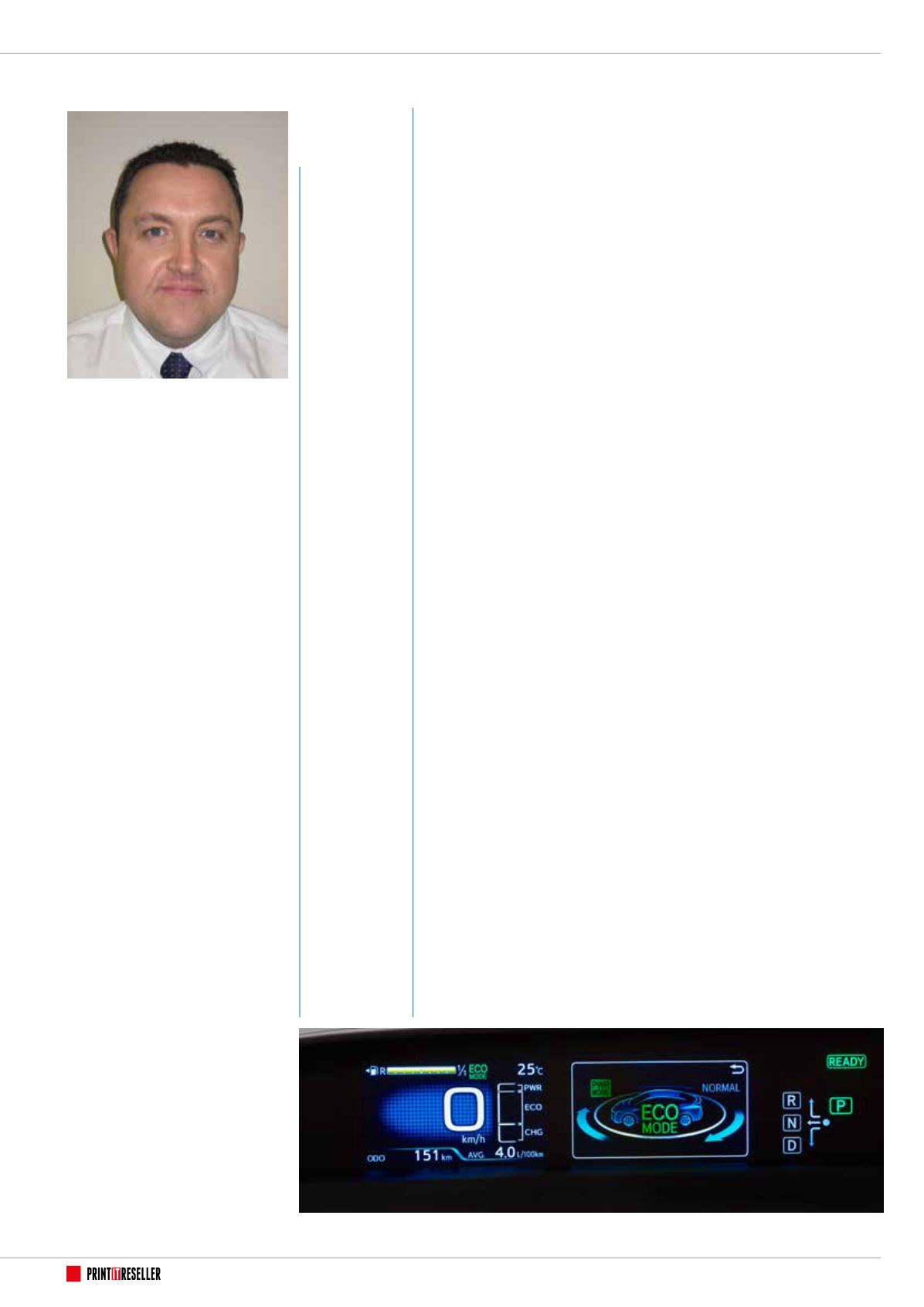
01732 759725
VOX POP
38
Matt Goodall:
“All of our engineers drive
vans, although in most cases these are
crew vans which have family space and
the benefit of a large carrying area. These
provide the perfect balance between car
and van, and work for both the engineers
and the company.”
Terry Henderson:
“Our engineers drive
saloon cars. These provide ample room to
carry spares. We don’t consider vans, as the
industry as a whole demands cars.”
Derek Russell:
“RDT tend to use both,
depending on the situation. When moving
equipment there is an obvious requirement
to use the company vans, but with much
of our business now solutions-based, our
analysts tend to make car journeys or use
public transport when attending client sites.
“One area we’ve also looked at closely
is reducing the amount of miles equipment
travels before its final destination. Taking
advantage of virtual warehousing through
Techdata means that instead of equipment
being shipped directly to us and stored
onsite, we can now collect it from the
Techdata facility and deliver it to the client
when they’re ready. It’s one less trip for the
equipment and our analyst. We estimate a
reduction in miles of approximately 25,000
to 35,000 per annum as a result.”
Have you considered, or do you
already have, hybrid or electric
vehicles?
Andrew Jones:
“We have looked at
hybrid vehicles, but given our geographic
position and the relatively small number of
recharging points, it is far more practical
and cost-effective for us to run a fleet of
diesel vehicles.”
Tony Wills:
“We have considered these
options and currently have one under
evaluation.”
Mark Smyth:
“When Vision evaluated
vehicles as part of the recent fleet
replacement scheme we considered several
electric hybrid options, including the Toyota
Prius. However, the boot space was too
small for field engineers. We also looked
at Mitsubishi and Vauxhall before finally
concluding that the market didn’t meet
our current requirements. This will be
continuously re-evaluated as the electric
hybrid offering widens.”
Sam Elphick:
“We trialled an electric van
recently for two weeks, courtesy of Nissan,
which was a very unique experience!
The van itself drove perfectly and was
very quiet. However, we concluded that
charging the vehicle would be a little bit
difficult, especially if our drivers were out
on the road for a long period of time and
in a rural area with no accessible charging
point. In addition, if we were to carry out
a delivery/installation that was quite far
away, the logistics of the charging could
cause a headache.”
Matt Goodall:
“We have considered
both. Generally, hybrid vehicles offer very
limited range on electric only and the
additional weight provides a poorer MPG
figure than a normal diesel engine.”
Terry Henderson:
“Yes, we have two in
our fleet. Experience has shown that hybrid
cars in general are a way for manufacturers
to publish low emissions figures. But in
practice they don’t return MPG anywhere
near the manufacturers’ claims and they
are expensive to buy/lease, as they tend
to be ‘premium’ vehicles. We will consider
replacing the fleet with hybrid vehicles
when the cost comes down.”
Derek Russell:
“We have looked at
hybrid electric vehicles and clearly feel that
they will be a realistic option within the
next three to five years as the technology
continues to develop and our existing
contracts come to a natural end. We always
encourage the use of public transport
when it’s feasible.”
When selecting vehicles, what
emphasis do you place on
environmental issues and how
important is cost in the decision-
making process?
Andrew Jones:
“The personal tax cost
(benefit in kind tax value) will always be
a significant factor in the selection of
company cars. A car is not only essential
for the job; it is also a motivational
consideration for drivers who typically
cover 25,000 miles plus per year – it is in
effect their mobile office.
“Alongside the personal tax issue in
the selection process, we consider the CO2
impact the vehicles will have in relation to
our company environmental policy. We aim
to find a balance between the cost and
environmental impact any vehicle will have
on the company, the employee and the
environment.”
Tony Wills:
“As we are ISO
14001-accredited we do take these
matters seriously and therefore review
environmental issues as part of our overall
purchasing decision. We also take a very
close look at the total running costs and,
while this is not the determining factor,
it is a consideration in the final selection
process.”
Mark Smyth:
“Our recent fleet
replacement scheme was all about the
environment, emissions and fuel efficiency.
But this does have to be balanced with
cost and the return on investment. Vision
has a strong environmental culture and
is ISO14001-accredited. We are always
considering new ways to reduce waste,
energy consumption and our business’s
impact on the environment.”
Sam Elphick:
“As a business we try
to be as economical as possible when
making new vehicle decisions, taking
into consideration both the cost and
the environment. With the internet and
comparison websites it is very easy to gain
a good understanding of projected costings
for the vehicle, as well as its impact on the
environment. We have an allowance for
...continued
continued...
Matt Goodall,
Service Director,
Office Evolution
Experience
has shown
that hybrid
cars in general
are a way for
manufacturers
to publish
low emissions
figures. But in
practice they
don’t return
MPG anywhere
near the
manufacturers’
claims.
The Toyota Prius
dashboard


